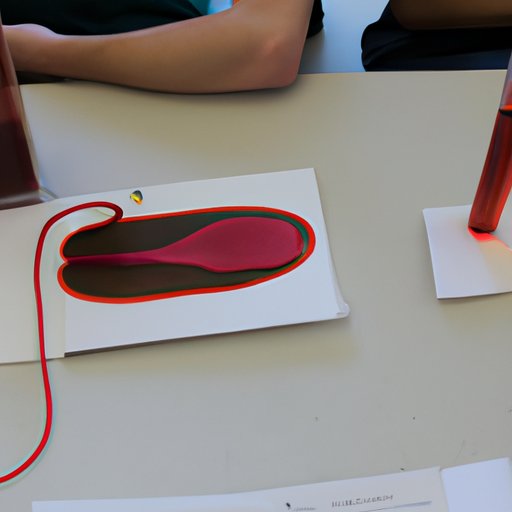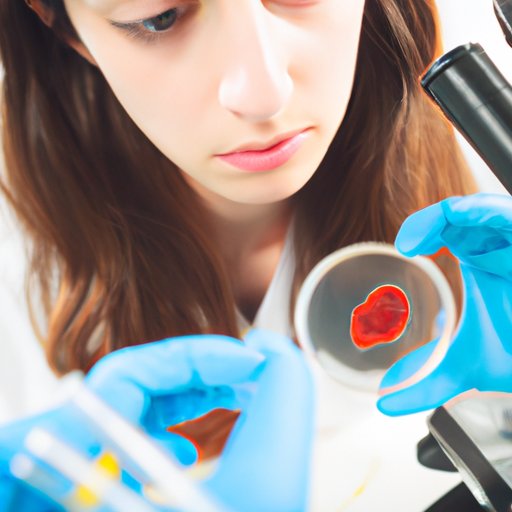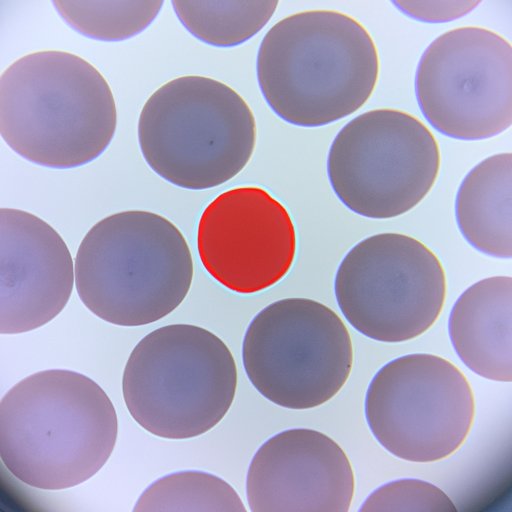Introduction
Blood is one of the most important components of the human body. Its primary role is to transport oxygen and other essential nutrients throughout the body. But how does the body produce this vital liquid? In this article, we will explore the anatomy and physiology of blood production and investigate the different types of blood cells and their functions.

Exploring the Anatomy and Physiology of Blood Production
Blood production, also known as hematopoiesis, is the process by which new blood cells are produced in the body. This process begins in the bone marrow and continues throughout life. The blood cells produced include red blood cells (RBCs), white blood cells (WBCs), and platelets.
The components and functions of blood are complex. RBCs are responsible for transporting oxygen from the lungs to the rest of the body. WBCs are part of the immune system and help to fight off infection and disease. Platelets are small fragments of cells that help to form clots and stop bleeding.
Investigating the Different Types of Blood Cells
RBCs are the most abundant type of blood cell, making up around 45% of the total volume of blood. They are biconcave discs that contain a protein called hemoglobin, which binds to oxygen molecules in the lungs and transports them to the rest of the body. RBCs have a lifespan of about 120 days before they are replaced.
WBCs make up about 1% of the total volume of blood and play an important role in fighting off infection and disease. There are several different types of WBCs, each with its own specific function. These include neutrophils, lymphocytes, monocytes, and eosinophils.
Platelets are small fragments of cells that help to form clots and stop bleeding. They make up about 7% of the total volume of blood and have a lifespan of around 8-10 days. Platelets contain proteins that help to initiate clotting and prevent excessive bleeding.

Examining the Process of Red Blood Cell Formation
Red blood cell formation, or erythropoiesis, is a complex process that begins in the bone marrow. The bone marrow is a spongy tissue located in the center of certain bones and is responsible for producing new blood cells.
The first step in erythropoiesis is the production of a precursor cell called a proerythroblast. This cell then undergoes a series of maturation steps, during which it becomes an immature erythrocyte. The immature erythrocyte then matures into a mature erythrocyte, which is released into the bloodstream.
Once in the bloodstream, the mature erythrocyte is able to bind to oxygen molecules in the lungs and transport them to the rest of the body. This process is crucial for maintaining oxygen levels in the body and ensuring proper organ functioning.
Conclusion
Blood production is a complex and fascinating process. It involves the production of new blood cells in the bone marrow, followed by a series of maturation steps and the release of these cells into the bloodstream. These cells, including red blood cells, white blood cells, and platelets, all have different functions but work together to keep the body healthy and functioning properly.
Understanding the anatomy and physiology of blood production can help us to better appreciate the importance of this vital liquid and the role it plays in our overall health and wellbeing.
(Note: Is this article not meeting your expectations? Do you have knowledge or insights to share? Unlock new opportunities and expand your reach by joining our authors team. Click Registration to join us and share your expertise with our readers.)
